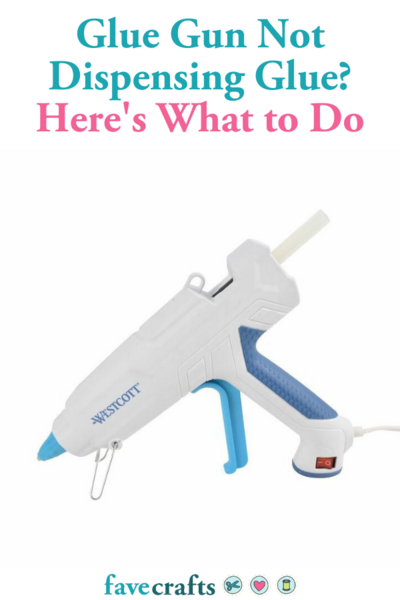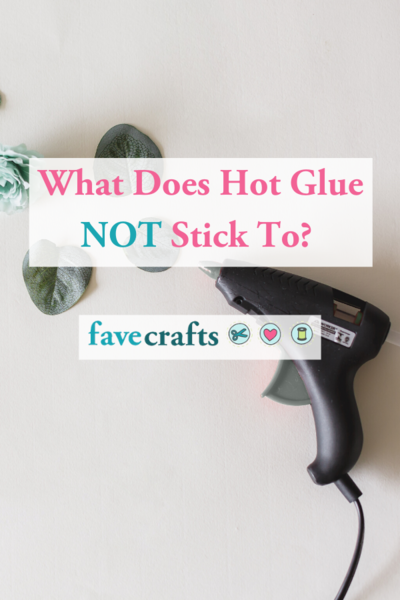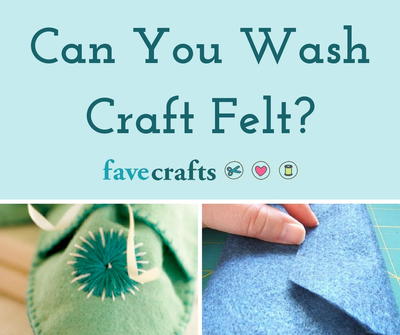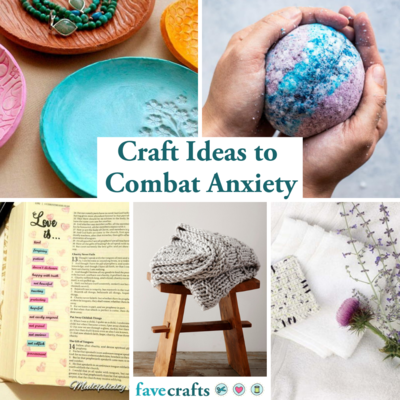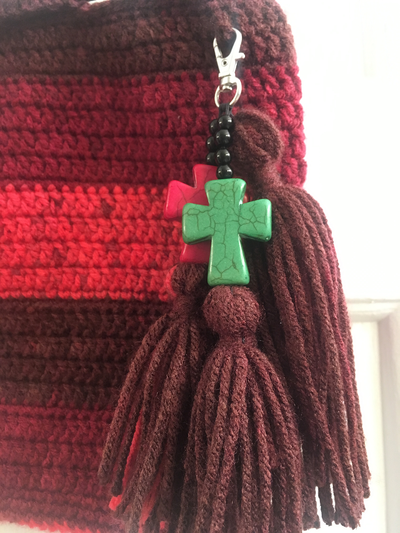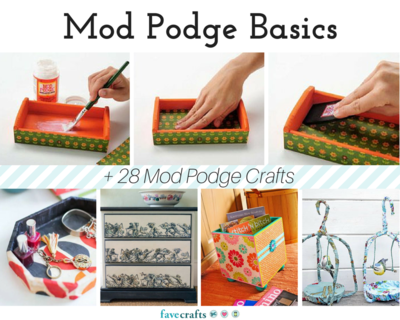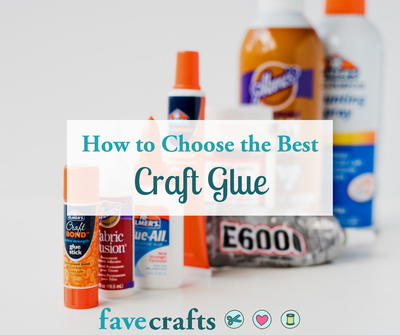Crafting Keeps You Young: The Health Benefits of Crafting
Learn how to destress and practice mindfulness with crafting.
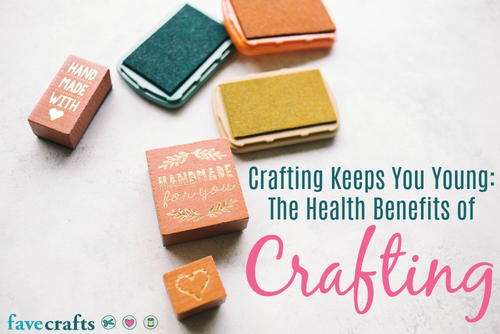
We get it: crafting goes in and out of popularity. Sometimes it can be hard to justify spending a few hours on a project that might end up in a drawer later. Adult coloring especially, which is so relaxing, can be challenging to defend if your coloring pages just stay inside the book forever! (Tip: there are actually many coloring pages projects to make!)
Don't worry: there are enormous benefits to crafting. Similar to those studies on crosswords and other puzzles that keep the mind active, crafting can trigger mindfulness that will keep the brain sharp into old age. Learn more about how crafting keeps you young with our health benefits of crafting listed below.
Crafting Reduces Stress
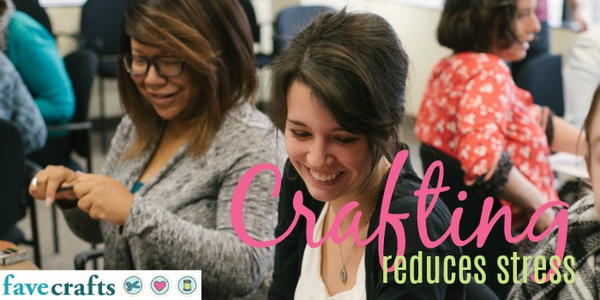
There have been numerous studies on the ways crafting reduces stress. Cortney Phillips Meriwether, in an article found in Rodale's Organic Life, says that crafting "allows a person to find some peace and focus in a simple activity, also called 'flow.'" Meriwether continues by saying, "If I’m fully immersed in a craft project, I’m less likely to turn to other unhealthy coping habits—like binge eating or falling down a black hole of Googling. Plus, while it’s the process of crafting that gives my inner worrier some relief, ending up with a finished product is a nice little bonus."
An article in Berkeley Wellness reported similar findings. They write, "The rhythmic, repetitive movements and focused attention required of certain crafts seem to produce a calming effect akin to meditation." They cite a study done by the British Journal of Occupational Therapy called The Benefits of Knitting for Personal and Social Wellbeing in Adulthood. When it comes to knitting specifically, they found "a significant relationship between knitting frequency and feeling calm and happy." Other words used to describe those feelings while knitting include "soothing", "restful", and having "zen-like qualities."
The study reported that knitting helped folks unwind from the pressures of work. Best of all, "More frequent knitters also reported higher cognitive functioning." Knowing that knitting and other crafts keeps the mind sharp over the years should certainly reduce stress! But the actual act of crafting is stress relieving in itself because of mindfulness.
Knitting and crochet are even soothing for people in the nation's highest offices! Judge Ketanji Brown Jackson recently shared that she crochets and knits to manage stressful situations, such as judicial confirmation processes. With support from her crochet expert mom, Jackson crafts hats and scarves to express her creativity and reduce stress.
Crafting Increases Mindfulness
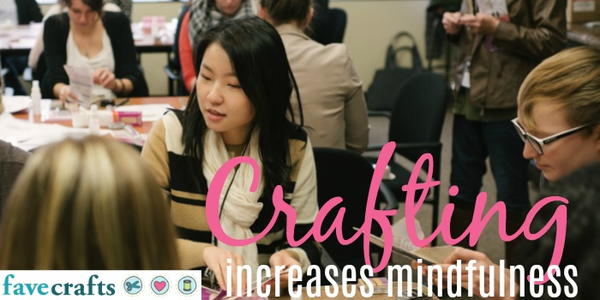
Mindfulness is all about being in the moment. Our friends at CraftFoxes shared an excellent article on the FaveCrafts Blog all about how to Craft Your Way to Better Heart Health, and they make a great point: "lowered stress doesn’t happen without focused concentration." Keeping yourself focused on how the yarn feels in your fingers, the sound of clinking needles, tearing paper for decoupage, or the scratch of colored pencils on the pages, are all excellent ways to focus on the moment and keep negative thoughts like worrying away.
I love mindfulness in the way Chris Croft describes it in his video series on happiness found on Lynda.com. (Note: Lynda is a paid site, but you can do a free 30-day trial to explore before deciding whether to subscribe.) The essence of mindfulness, he explains, is living in the present. How hard is that for most of us? It is so tempting to live in the past or worry about the future. But in focusing on the present, especially on your craft, you are focusing on what's real, instead of "sleepwalking through life" as you think of what was or could be.
My favorite analogy he makes in this video is that mindfulness is a bit like hiking, but not looking at the map the whole time. If you're constantly staring at the map looking at what's coming next, you'll miss the beauty of the nature around you! You need to check the map (or perhaps to tie this more directly to crafting, the knitting pattern) periodically so you don't get lost or make an error, but in general the focus should be on the craft, or adventure, itself. You can read more about mindfulness on the Chris Croft Training website.
I've noticed that activities like crafting also help enormously to reduce stress because with mindfulness you're focusing on something that can be mindless (in a good way!). If you're following an easy crochet pattern that someone else wrote, you focus on that repetitive act. You color a page someone else designed. (As an aside, even an activity like playing a piano song you're already familiar with can be stress-reducing.) The idea of generating a new pattern, designing a coloring page, or creating something entirely new might in ways be overwhelming to an already stressed mind. But following a project already laid out for you allows you to practice mindfulness and be in the moment without the pressure of coming up with something new. Best of all, you produce a new piece of artwork in the process!
Crafting Helps with Anxiety and Depression

According to a story at CNN, "neuroscientists are beginning to see how studies on cognitive activities such as doing crossword puzzles might also apply to someone who does complex quilting patterns." Crafting helps with depression and anxiety because "The repetitive motions of knitting, for example, activate the parasympathetic nervous system, which quiets that "fight or flight" response" helping our bodies which are in a constant state of stress. In losing ourselves in our craft, we experience flow, "a few moments in time when you are so completely absorbed by an activity that nothing else seems to matter."
Numerous mental health facilities have turned to arts and crafts as a means of reducing anxiety and depression. There are hundreds of art therapy ideas out there. Expressive Art Inspirations has an excellent roundup of 100 Art Therapy Exercises, including:
- Put together a journal to visually express your emotions.
- Attach a drawing or message to a balloon: Send away negative emotions or spread positive ones by attaching a note or drawing to a balloon and setting it free.
- Paint to music.
- Make a mandala.
- Draw something HUGE. Getting your body involved and moving around can help release emotion as you're drawing.
- Make a zentangle. These fun little drawings are a great tool for letting go and helping reduce stress.
- Choose the people who matter most to you in life and create unique art for each. This is a great way to acknowledge what really matters to you and express your gratitude. (This is my personal favorite of this list!)
Crafting Keeps You Young
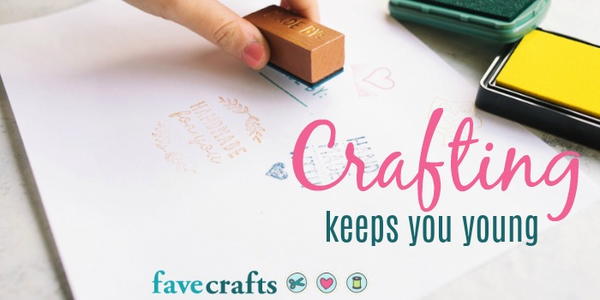
That same story at CNN talks about how creative activities may protect against aging. Neuroplasticity, or the idea that our brains are flexible and can adapt to their environment, means that activities that stimulate the brain can delay conditions like cerebral atrophy and dementia. We've heard this about crossword puzzles and others like Sudoku. But what about crafts?
Catherine Carey Levisay, a clinical neuropsychologist (and wife of the Craftsy.com CEO!), says, "Crafting is unique in its ability to involve many different areas of your brain. It can work your memory and attention span while involving your visuospatial processing, creative side and problem-solving abilities."
At Stitchlinks, a community interest company devoted to the movement studying how crafts can improve wellbeing, one study showed, "a positive trend which suggests that after knitting, memory performance, as measured using Free Recall, may be enhanced by a short period of knitting that immediately precedes the recall attempt." As if we needed a better reason to craft! Not only it is enjoyable and calming, but it may actually help with memory and keep the mind sharper longer.
Benefits of Crafting in Groups

Often it's more convenient to craft from the comfort of one's own home because some crafts require a ton of not-easily-transportable supplies (scrapbooking supplies, die cutting machine, sewing machine, etc). However, crafting in groups can be amazingly beneficial, and here's why.
I mentioned earlier the study done by the British Journal of Occupational Therapy, in which knitting specifically was the focus. One of the findings is that "Knitting in a group impacted significantly on perceived happiness, improved social contact and communication with others." CraftFoxes expands further on this idea, calling it The Soothing Circle. They cite Betsan Corkhill of Stitchlinks, who says, “The process of knitting relaxes the group members so conversation flows and there is lots of laughter. It’s the activity that encourages this. The activity also gives each group member a reason to attend and a point of conversation so that if they are feeling self conscious or nervous there is always something to talk about.”
I've experienced this personally! On Thursdays here at Prime, a group of us knits and crochets together during lunch. We call it Stitch Circle. And it's amazing how the conversation flows, but we're also totally at ease with silence because we are focusing on our craft. I highly recommend organizing a weekly lunch like this if you work an office job or in some similar space!
Conclusion: Crafting Increases Happiness!

Overall, crafting increases happiness through reducing stress and anxiety, sharpening the mind, and increasing social time and community. Through various studies as well as personal experiences shared above, it's clear that the emotional, mental, and tangible benefits (you make pretty things!) speak for themselves.
Our Most Relaxing Crafts
- 16 Zentangle Coloring Pages
- How to Make a Rice Heating Pad
- Fizzy DIY Bath Bombs
- 45 Quick and Easy Free Knitting Patterns [and Beginner Help]
- Eiffel Beginner Knit Cowl Pattern
- 50+ Free Easy Crochet Patterns [and Help for Beginners]
- Outlander Crochet Cowl Pattern
- Cotton Stripes Knit Dishcloth
- Any and All Christmas Crafts (start early and avoid stress!)
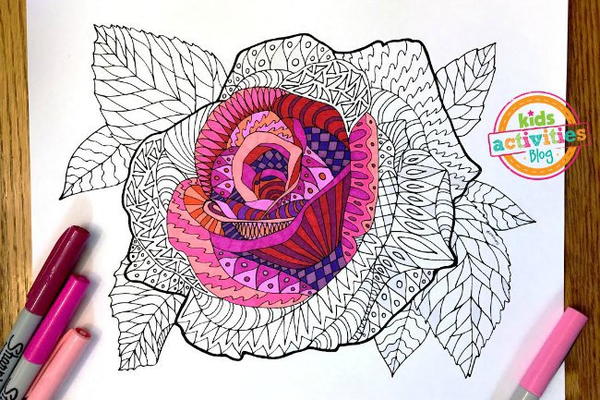
What, to you, is the greatest benefit of crafting?


